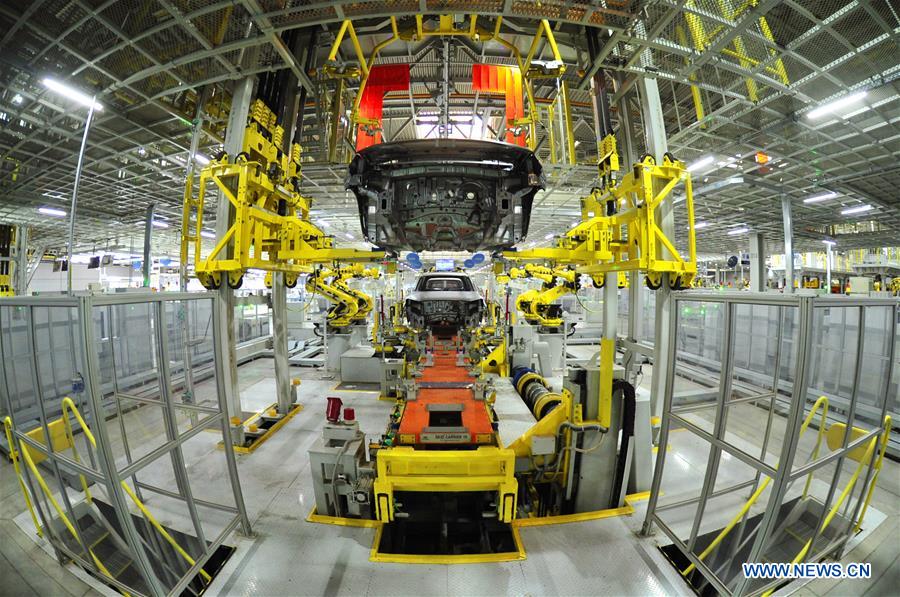
The production lines run at a plant of Beijing Hyundai in Cangzhou City, north China's Hebei Province, March 13, 2020. The Beijing Hyundai plant in Cangzhou resumed full operation on Friday under measures taken to prevent the spread of the novel coronavirus. (Xinhua/Mu Yu)
BEIJING, March 16 (Xinhua) -- China is preparing to take stronger macro policies to shore up its economy and keep employment stable as the latest data on industrial output, retail sales and investment showed across-the-board contraction in the first two months due to the outbreak of novel coronavirus disease (COVID-19).
China's value-added industrial output, an important economic indicator, fell 13.5 percent year on year during the January-February period. Fixed-asset investment went down 24.5 percent, while retail sales of consumer goods dropped 20.5 percent, according to the National Bureau of Statistics (NBS).
Early epidemic control efforts by the government had kept most people across China indoors and factories, shops and restaurants shut, which had proved key to the anti-virus battle but also resulted in disruptions to economic activities and supply chains.
While the epidemic has caused relatively big shocks to the economy, the impacts are largely "short-term, external and controllable," NBS spokesperson Mao Shengyong said at a press conference.
As the spread of the virus has been basically contained, China's improving economic fundamentals and the trend of upward momentum in the long term have not changed, Mao noted, citing the country's economic scale, strong resilience, internet-powered new drivers and flexible macro policies as among the major factors underpinning growth.
"The economy has withstood the shocks of the epidemic," he said.
Given that businesses have quickened pace to resume normal operations, the NBS projects economic activities will see a visible recovery in March and the second quarter as the impacts gradually weaken.
On the outlook for the second half of the year, forthcoming stronger macro policies will put the economy on steadier footing, according to Mao.
Facing potential economic shocks from the epidemic, China's financial authorities pledged to pay more attention to policy flexibility to keep reasonably sufficient liquidity and release the potential of the loan prime rate reform.
Starting Monday, China's central bank implemented targeted reserve requirement ratio (RRR) cuts for eligible banks, the second such cuts this year, that would release another 550 billion yuan (about 78.6 billion U.S. dollars) of liquidity into the market.
Other policy moves including the issuance of special reloans to provide preferential interest rate credit support to enterprises and the issuance of special bonds to provide sufficient funds to commercial lenders for supporting smaller enterprises.
On the fiscal side, the Ministry of Finance has allocated quotas for new local government bonds ahead of schedule and rolled out tax and fee cuts to hard-hit sectors.
"Overall, China's government debt levels remain relatively low...and there is room for properly raising the budget deficit," Mao said.
Asian financial services group Nomura expects more financial relief and policy easing measures in the coming months, including further liquidity injections through channels including the medium-term lending facility (MLF) and RRR cuts.
Monday's data also showed China's job market remained generally stable in February, with the surveyed unemployment rate in urban areas at 6.2 percent, up 1 percentage point from the previous month, though it is set to improve as enterprises restore production order.




 A single purchase
A single purchase









